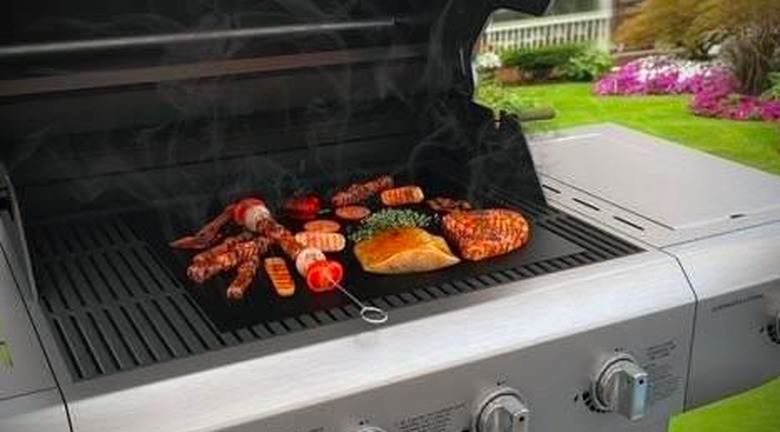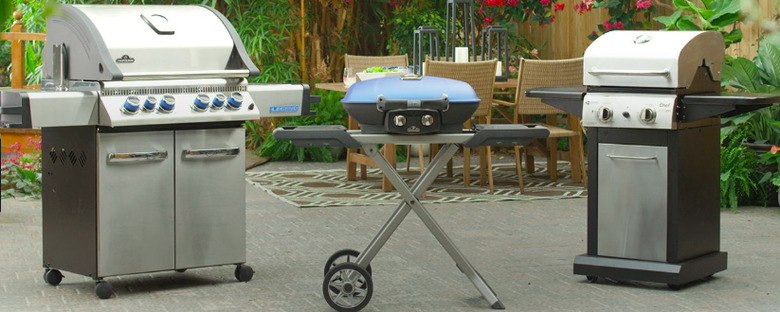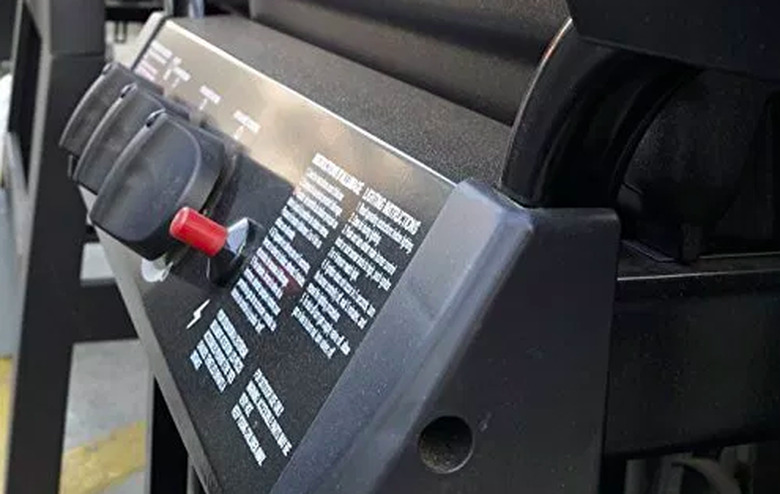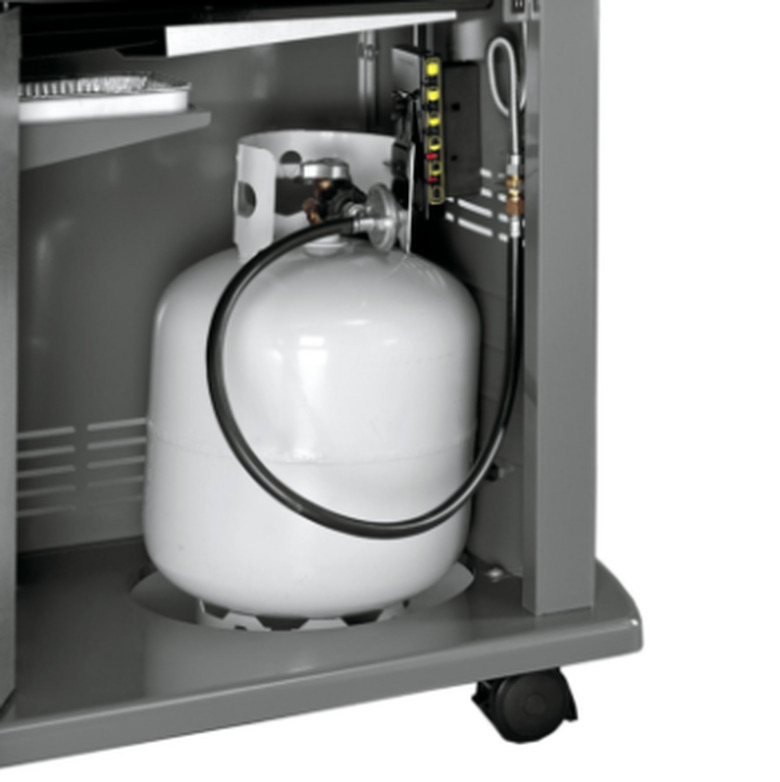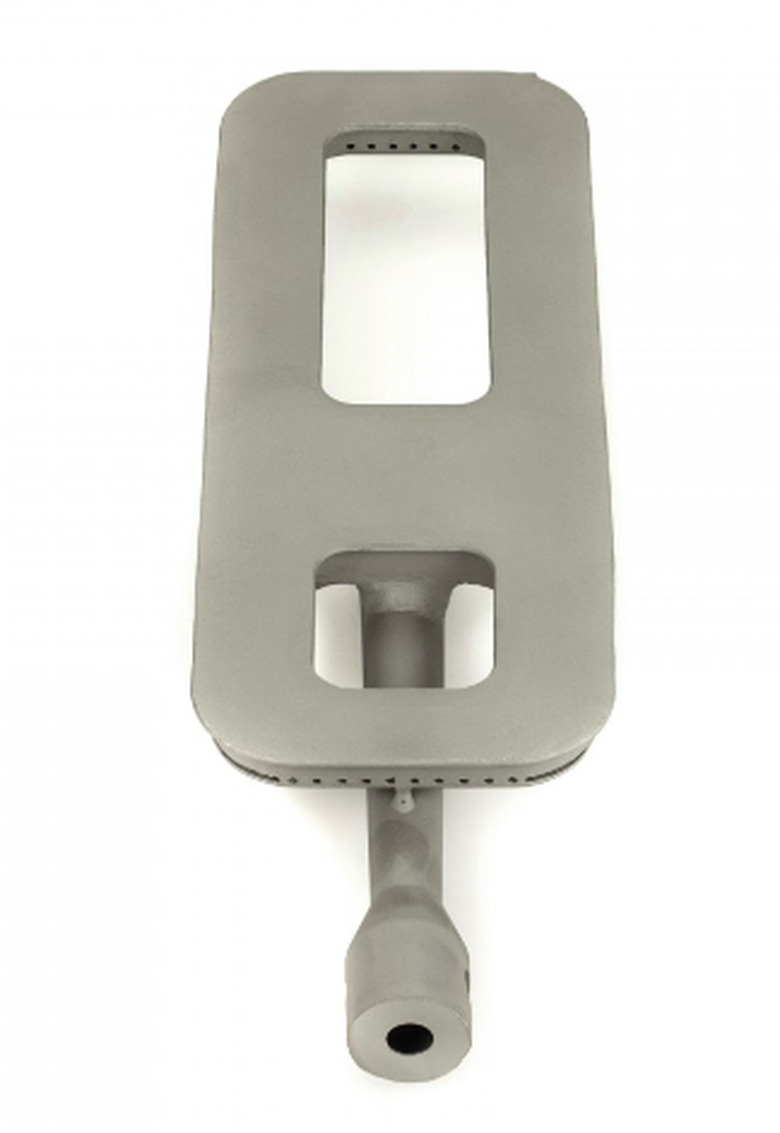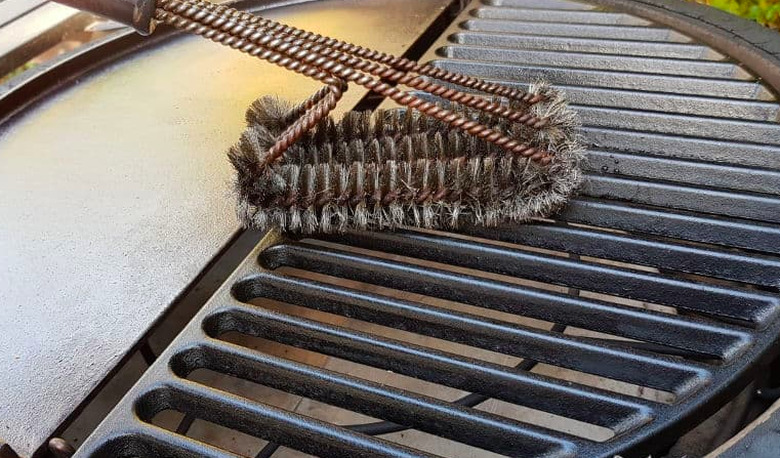Easy Barbecue Grill Repairs
More than one homeowner has bought a barbecue grill, used it for two or three summers, then discarded it begins to smoke or cooks unevenly. There's no need for that. Most models are designed to last for many years, even if you don't store them carefully during the winter. It may take a bit of work to bring an older grill up to snuff, but it's work virtually that anyone can do, and you'll save hundreds of dollars over the cost of replacing it. Much of the work involves cleaning, but you may also have to service the propane system and the igniter. One thing you can't do is restore a corroded burner or grill cover. If rust has eaten its way through any piece of metal, that part usually has to be replaced.
Start with a Thorough Inspection
Barbecue grills are fairly simple appliances. Charcoal or gas (liquid propane or sometimes natural gas) fuels a burner flame that is contained within a firebox. The burner is covered by a metal or porcelain grate on which you cook your food, and the entire chamber is contained by a cast iron or steel cover. That's about it. Besides the gas control valve and flame ignitor, if there is one, there are no finicky electronic controls, gears or mechanical gadgets that can break or malfunction.
To inspect your unit, remove the cooking grates and any old charcoal that happens to be in the firebox and check the firebox lining for rust. On gas grills, also check the burners and burner covers for rust. If you spot any, make sure it hasn't eaten its way through the metal.
Next, turn on the valve on the bottle that supplies gas to your propane-fueled unit and start the flame, using the igniter. Make sure you can control the flame with the control knob and that the gas burns evenly across the entire burner. Finally, make sure the flame extinguishes when you turn the gas supply off and that you see no residual flames or smoke.
What to Do About Rust
A surface coating of rust on the firebox of burners usually isn't a problem. You can usually get most of it off with a wire brush. You can also dissolve it with a rust-dissolving chemical, especially if you're planning to repaint the grill, but don't do this just before cooking—the chemicals need time to off-gas and evaporate to prevent contamination of the food. If you have used a rust dissolver, let the barbecue grill sit unused for a day, then turn the on and let the firebox heat up for 20 to 30 minutes prior to cooking.
If rust has eaten its way through any part of the firebox, it's time for a new barbecue. Although there are materials that can be used to patch rusted metal, they are normally reliable up to about 450° F., and your grill is likely to get hotter than that.
Servicing the Piezoelectric Igniter
The red button on the front panel of your propane grill is the igniter. Press it, and you should hear a clicking sound as the unit creates sparks to ignite the gas. Most grills use a type of ignitor known as a piezoelectric (or piezo) ignitor, which has no power source but simply creates a spark by means of a small hammer that contacts a quartz crystal within the ignitor.
Sometimes the ignition rod at the end of the piezo ignitor can get covered with grease or food, preventing it from generating the necessary spark. If your ignitor isn't working properly, start by cleaning the ignition rod at the tip of the ignitor with a cotton swab dipped in rubbing alcohol. After cleaning, attempt to start the grill again. If cleaning does not restore the ignitor, then it will need to be replaced.
To replace the igniter button, pull the wire connector off the back and remove the spring from the Venturi tube opening on the burner. Unscrew the igniter collector box from the burner, then pull out the igniter button. You may need to unscrew a retaining nut or squeeze together some spring retainers to free it. Reverse the procedure to install the new button.
Servicing the Gas Hose and Regulator
During your inspection of a propane barbecue, you should test the propane tank, supply hose and connections for leaks. The recommended way to do this is to mix a capful of dish detergent in a cup of water and spray or brush the soapy water onto the hose and all the connections, turn on the gas and watch for bubbles. Any bubbles you see indicate a gas leak. If they are coming from a connection, tighten the connection to stop the leak. If the leak is coming from the hose or the regulator, the hose and regulator both have to be replaced, since they come as a unit.
The regulator is the disc-shaped component that links the control valve to the gas hose. Its function is to reduce the gas pressure flowing from the tank by means of an interior needle valve. When a propane regulator develops problems, you may notice that the gas flame is yellow or orange rather than blue, or you may hear popping noises when you turn the gas on or off. Sometimes flames spill out of the ends of the burner, not just the pin-hole orifices in the burner. While theoretically a propane regulator can be serviced, it is generally much easier to simply replace the part, since they are relatively inexpensive.
To replace the hose and regulator, first turn off the gas valve, then unscrew both the tank fitting and the grill inlet fitting, using a wrench. Purchase an identical replacement at the hardware store or home center. Screw the hose fitting onto the grill inlet and tighten it with a wrench, then screw the other end onto the tank and hand-tighten the large plastic fitting. Do the soap test to check for leaks, and tighten as necessary before you use the grill.
Servicing the Burner
If you notice that the gas flame on your grill is burning sporadically or unevenly, this is usually because the burner holes are clogged. The burner is at the bottom of the firebox, sometimes hidden by metal burner covers that you can simply lift out. The burner itself is loosely connected to the gas supply by Venturi tubes, and you can remove the burner by working these tubes out of their slots.
One byproduct of gas combustion is water vapor, so burners frequently develop rust that should be cleaned off with a wire brush. Also, clean the Venturi tubes with a bottle brush or Venturi tube brush. Use a small finish nail or thin piece of wire to ream out each of the burner orifice openings, which may become clogged with grease or food debris.
Grill burners may eventually rust through entirely, so when you see this, the burner should be replaced with an exact duplicate. Hardware stores or home centers may sell generic replacements, or you can buy an exact duplicate directly from the manufacturer of your grill.
Cleaning the Grates
The grill grates are what directly touches the food you cook, so it's important to clean them after every use. Use a wire brush or a grate cleaning brush to scrape off hardened grease and debris. If your grates are coated with porcelain, use a brush with nylon bristles to scrape it, as metal bristles may damage the porcelain surfaces. You may need to scrape some areas with a flat implement, such as a paint scraper, to get off stubborn grease. Use plastic scrapers on porcelain-coated grates.
You can also use oven cleaner to clean the grates. Spray it on, give it time to work, and wipe it off with a water-soaked sponge. Don't let the oven cleaner sit too long or it will harden and become more difficult to remove. You can remove old oven cleaner by spraying on fresh oven cleaner and wiping it off while still wet. After cleaning a cast-iron grate with oven cleaner, wipe it with vegetable oil to prevent it from rusting.
